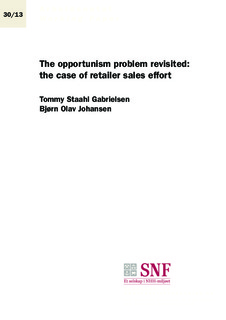| dc.description.abstract | We study a setting where the opportunism or commitment problem identified by Hart and Tirole (1990) may arise. An upstream monopolist may sell its product to two differentiated downstream retailers. Contract unobservability induces the manufacturer and each retailer to free-ride on margins earned by rival retailers, resulting in low transfer prices and low overall profit. O’Brien and Shaffer (1992) proposed a solution to this problem involving squeezing retail margins by using maximum RPM and high transfer prices. We show that when retail demand depends in any degree on retail sales effort, this equilibrium breaks down, and the opportunism problem reappears with full force. We show that no type of own-sale contracts or combination of own-sale restraints will solve the problem if sales effort matters. Moreover we show that certain horizontal commitments, as for example industry-wide minimum RPM, may restore the fully integrated outcome, but only in special cases. | no_NO |
